A lot of tech-savvy people are looking forward to the day when the connected home with its smart devices will be a reality for all of us. Remotely regulating the temperature, humidity, and noise level; being able to remotely turn on and off lights and activate security systems – all of this used to sound like a fairy tale, but not anymore.
Smart devices include anything from air conditioners to robot vacuums and are often developed by hardware companies like TP-Link, abode, Xiaomi, and Samsung.
When smart devices communicate among themselves, either on command or automatically, this network of devices is known as a device mesh. With a device mesh, appliances and devices from various ecosystems can be in constant communication with each other.
But for the device mesh to become our future, creators of new smart devices have to overcome one big obstacle: these devices must communicate with each other, even if they come from different ecosystems.
Major companies are fighting for this. At the end of 2019, Apple, Amazon, Google, and the Zigbee Alliance joined forces to create a connectivity standard that will increase compatibility among smart home products. Their joint project is called Connected Home over IP.
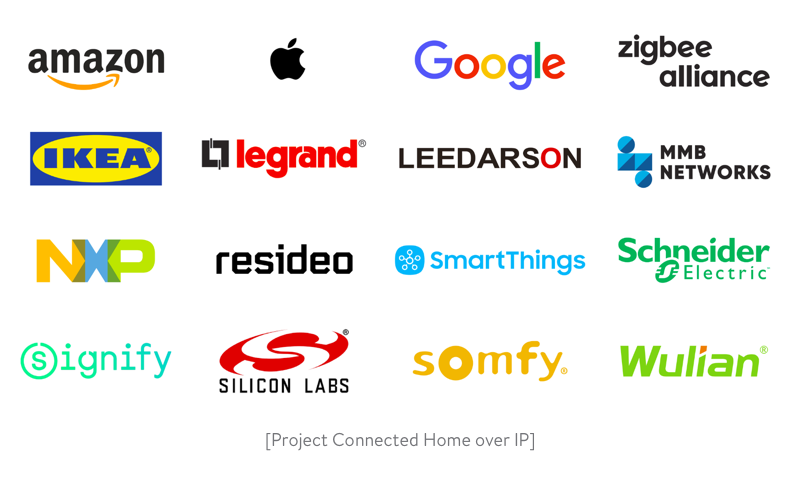
Meanwhile, tech giants like Google want their smart ecosystems like Google Home to support as many devices as possible. To make this happen, they provide smart device manufacturers with access to open smart home APIs.
This is what Amazon did with the Alexa Smart Home Skill API, which allows third-party smart appliances to communicate with Alexa. This API opens the door for Alexa to control devices including lights, door locks, thermostats, and motion sensors. If smart device manufacturers want their devices to be part of the Amazon ecosystem, they need to get Works with Alexa certification.
How smart devices communicate with each other
There are a number of network protocols that enable smart devices to communicate with each other.
- Bluetooth. This old-school wireless protocol is still commonly used in fitness trackers and almost all mobile devices. Sometimes it’s used with smart home technology. With the introduction of Bluetooth Low Energy in 2006, this protocol became more energy-efficient. Still, Bluetooth is less popular than other options. Bluetooth devices pair quickly and easily but have a short range. Also, Bluetooth sends signals over the busy 2.4 GHz frequency, so other nearby devices can interfere with it.
- Wi-Fi. The ubiquity of Wi-Fi and the low price of Wi-Fi devices are the main advantages of this technology. On the other hand, it usually operates on the traditional 2.4 GHz frequency, so it’s susceptible to interference just like Bluetooth. Wi-Fi is also the most power-consuming protocol, which is its main drawback. It also lacks security. While there are a plethora of security features that keep Wi-Fi networks safe, they have to be regularly updated. Otherwise, smart devices will become vulnerable to hackers. Wi-Fi also has limited coverage, as other devices can’t retranslate the signal from a Wi-Fi router.
- Z-Wave. Z-Wave is a wireless communication protocol developed in 2001 specifically for smart home devices. It’s actively maintained by the Z-Wave Alliance. Unlike Wi-Fi and Bluetooth, which require each smart device to be connected to a central hub, with Z-Wave, smart devices can send signals to each other. One central hub is linked to the internet, but the smart devices themselves don’t use Wi-Fi at all. They just use the Z-Wave protocol to send data to a Z-Wave hub.
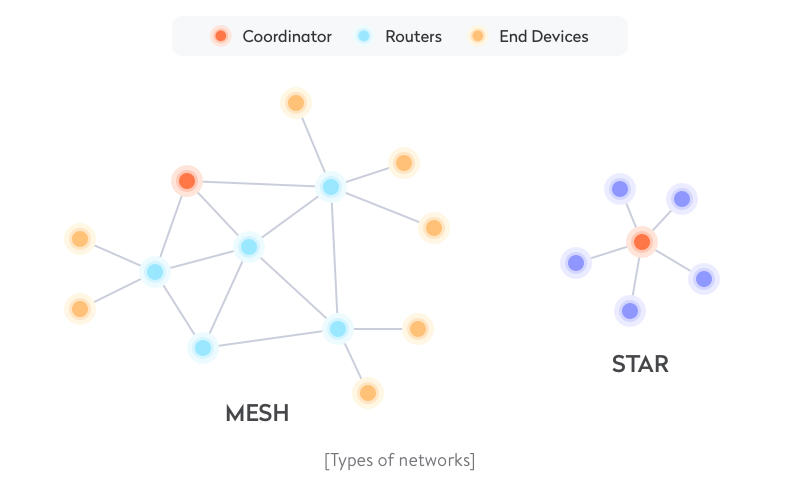
- Zigbee. Developed in 2003 and maintained by the Zigbee Alliance, this protocol is frequently considered the main rival to Z-Wave. Below, you can find a comparison of these two protocols.
- Thread. Thread is a fresh IP V6-based protocol created in 2015 and managed by the Thread Group. It works like Z-Wave, consumes less energy, and can work even when Wi-Fi networks go down. But since this protocol is young, few devices have Thread certification. However, more and more popular manufacturers are joining the Thread Group.
Using Zigbee and Z-Wave are considered the best practices, so let’s compare them in terms of compatibility, security, and basic characteristics.
Zigbee vs Z-Wave
Zigbee and Z-Wave have a lot of similar features, but each of these protocols offers a unique set of advantages for customers.
Each Zigbee or Z-Wave system includes three types of devices: a coordinator, a router, and so-called end devices. The coordinator acts as the root and bridge of the network: it’s responsible for handling and storing information while receiving and transmitting data from smart devices. A router is an intermediary device that allows data to go through coordinator devices and on to end devices. Different types of networks (star, tree, mesh) require different numbers of these devices.
Technical characteristics
Zigbee and Z-Wave work similarly, allowing users to remotely control smart devices using their smartphones or tablets.
Imagine you’re at work and you forgot to turn off a lamp in your living room. You can tap a Turn off light button on your smartphone and this command will be transmitted through the internet to your smart home hub. Once the command is received by the hub, it will send the command from one Zigbee or Z-Wave device to the next until it reaches the lamp and the light goes off.
Here’s a comparison of Zigbee and Z-Wave:
| Characteristic | Zigbee | Z-Wave |
| Use cases | Home automation, smart grids, smart home control | Home automation and security |
| IEEE standard | 802.15.4 | 802.15.4 |
| Network type | Mesh | Mesh |
| Distance | 10–20 meters | 100 meters |
| Maximum connected nodes | 65,536 | 232 |
| Operating bands | 2.4 Ghz (rarely 915 MHz, and 868 MHz) | 865.2–926 MHz |
| Throughput | 110 kbps max | 40 kbps |
| Security | AES encryption
cipher block chaining message authentication code | AES encryption |
| Power consumption | Low | Low |
As you can see, both Zigbee and Z-Wave consume little power and are AES encrypted. You can connect more devices via Zigbee (theoretically, more than 65,000 nodes can be connected), which makes it a good solution for large systems. But on the other hand, devices shouldn’t be placed too far from each other. In contrast to Z-Wave, which has a line-of-sight range of up to 100 meters, the range of a Zigbee network is only up to 20 meters.
Security
Zigbee uses AES-128 encryption, which was developed by the National Institute of Standards and Technology (NIST) and is commonly used by banks. Each network of devices has its own network key, and messages between devices are authenticated using unique keys. Zigbee-powered devices can be used to alert homeowners about intruders, smoke, or carbon monoxide leaks, for instance.
Each Z-Wave network is assigned a unique ID, as is each device within each network. These IDs are used to communicate with the hub, making it so another hub can never control your home’s connected devices. Devices like door locks and alarms require a lot of security features, so Z-Wave also uses AES-128 encryption (just as Zigbee does).
Interoperability
Interoperability has to do with which devices can communicate with each other.
The Zigbee Alliance currently includes around 450 member organizations that use, develop, and improve Zigbee’s open standard for wireless communication. The Z-Wave Alliance consists of 700 companies that produce more than 3,000 Z-Wave products.
Both Zigbee and Z-Wave allow customers to easily mix and match home automation systems manufactured by different companies.
The problem with Zigbee’s interoperability lies in its difficult certification process. Zigbee has two levels of certification: the first for hardware and the second for software. Sometimes, hardware can pass through certification while software doesn’t. In this case, users may get products that broadcast a Zigbee signal but aren’t using certified software and therefore don’t work properly.
That makes more smart device manufacturers opt for Z-Wave. At Yalantis, we have experience working on several home automation projects. The first was for Connect Home, a company whose devices work on Z-Wave technology. Our team has worked on their home control app.
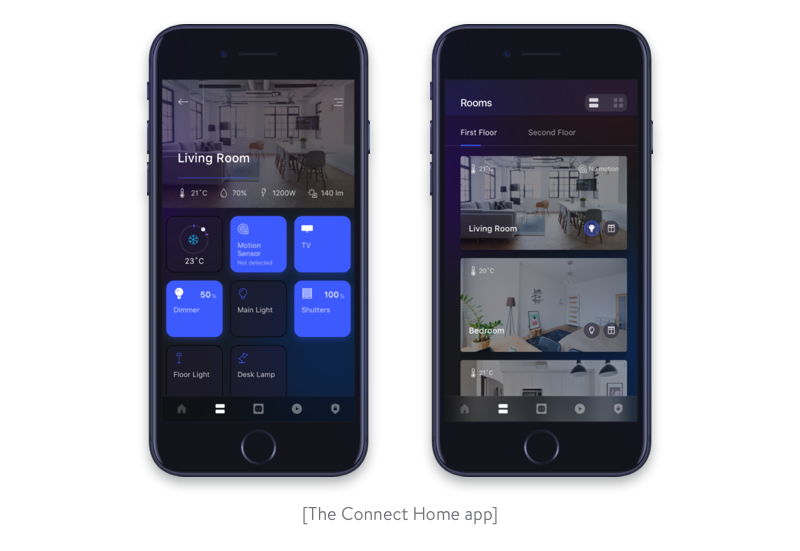
We’ve also worked on design and frontend development for the Abode home automation mobile app. To be more precise, Yalantis designers optimized the Abode’s UI and UX while our developers implemented the CUE automation engine. This functionality lets users specify how their security system and smart home devices react to specific events and conditions. Abode is one of the most well-known home automation providers in the US, and the devices by Abode are both Z-Wave and Zigbee compatible.
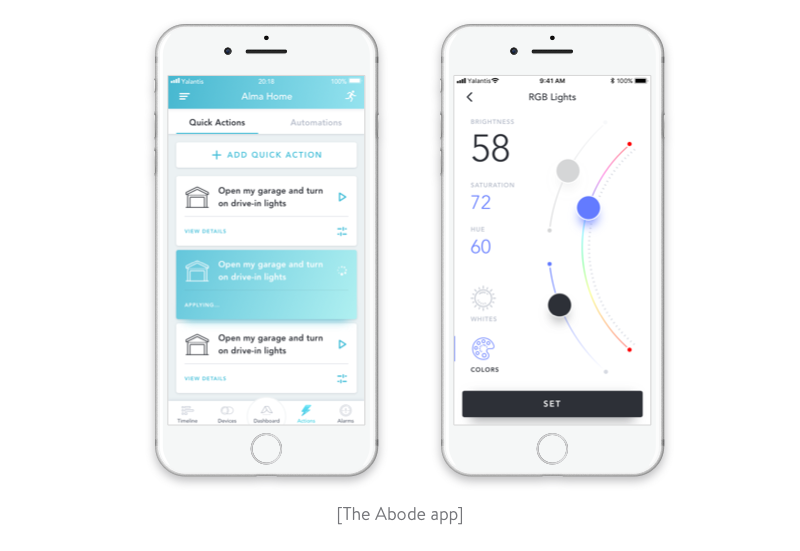
Reliability
We’ve mentioned that devices working on the 2.4 GHz frequency are less reliable. This is a busy frequency, so devices can interfere with each other. Operating on the 2.4 GHz frequency helps most Zigbee devices transmit more data but increases the chances of interference.
Z-Wave is considered more reliable than Zigbee, as it operates on a different spectrum. But on the other hand, Z-Wave has slower transmission speeds. Z-Wave’s speed is enough for sending commands to devices, but it makes Z-Wave a bad decision for streaming video and audio.
Read also: How We Developed Jelly ToolBar Animation for Android in Kotlin
Smart home automation using Zigbee and Android devices: How does it work?
A microcontroller is responsible for all functions of the smart devices in your smart home.
For example, when it gets dark outside, a light sensor might send a signal to a microcontroller and that microcontroller might turn on the lights. The status of all smart devices can be displayed on your Android device using the chosen automation protocol.
To create a fully functional smart home environment with remote gadgets management, you need to combine sensors and controllers with a user interface.
How smart home sensors communicate with each other:
- A user changes the settings on a smart device.
- A signal is transmitted to the closest Wi-Fi router.
- The signal is transmitted from the router to the server.
- The server sends the signal to a microcontroller.
- The microcontroller processes the data and sends a signal back to the smart device.
Here’s how its architecture looks like:
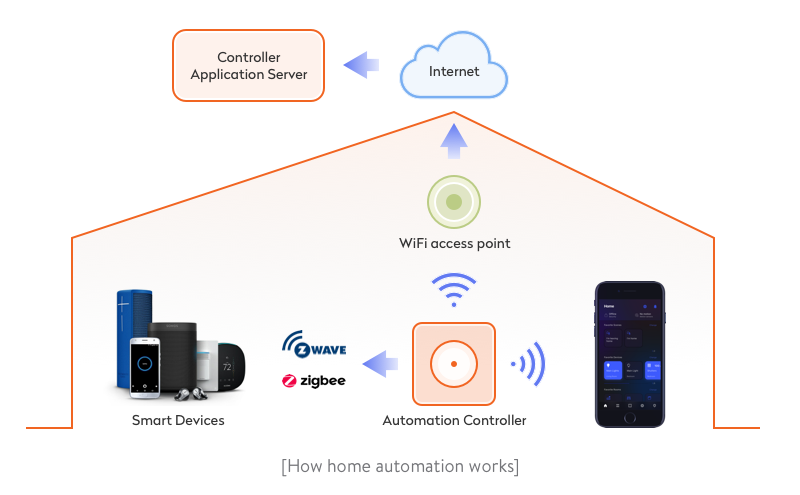
Next, you should take care about smart home app development. When it comes to building a smart home app for iOS and Android, mobile app development company can choose between two approaches available:
- Use a ready-made smart home platform. A number of well-known home automation manufacturers provide ready-made solutions for developing home automation apps. Among them are SmartThings by Samsung, the Azure IoT Suite, Oracle IoT, and Google Cloud IoT. If you wonder how much does it cost to create an app using these solutions, it may be cheaper than creating everything from scratch.
- Create a custom mobile monitoring system. This is the more complicated way, but it ensures that you get a personalized platform.
Zigbee and Z-Wave are the protocols you should keep in mind if you want to create an Android app that can smoothly interact with smart home appliances and sensors from various smart home providers. If you’re thinking on building a home automation app, we can help you make your ideas come true. Just drop us a line, we’ll be glad to help you.
Ten articles before and after
Why You Should Not Use Telegram Open Source Code
Best SEO Practices for React Websites
Eight Tips on How to Ensure Core Data Migration
How to Choose the Best-Fit Tools for Logistics Software Optimization
IPTV Telegram – 12+ the best IPTV subscription service provider
Full List of the Best Android App Development Tools in 2021
How to Validate In-App Purchases On-Device and Through a Client’s Own Server
How to Quickly Import Data from JSON to Core Data